How to Write a Call to Action for a Cold Email: Examples and Best Practices
Email is a fundamental channel of any B2B outbound marketing campaign. Databox survey found that cold email is considered the most effective tactic for outreach (36%), followed by a cold calling channel (only 18%). While the average open rate of emails is relatively high (21.3%), the reply rate in some industries is only 1%. Imagine, if you send a hundred emails, only twenty-one will be actually read by the recipients. Out of the twenty-one, only four or five will get an answer.
So, what could possibly make people answer your emails more frequently? Is it a well-described product, a joke in the email's first sentence, or maybe a funny GIF attached? Well, generally speaking, all of these elements play an essential role in constructing an excellent cold email template, but how many people have actually completed the desired action or the call to action in email is the real sign of success.
What Is a Call to Action in an Email?
Call to action (CTA) is a marketing term for any design (CTA button) or text (action phrase) that prompts an immediate response or an immediate purchase. An email call to action is that part of the text that tells your audience what to do: buy now, visit a landing page, sign up for a newsletter, get a free trial, connect over a call, read an article, and so on.
Telling a prospect what to do after reading an email from you is easy; motivating them actually to do it is what's hard. To achieve that, you must have a strong email body and a good, convincing call to action.
What Makes a Good Call to Action?
Some companies believe that if they include a green button with big words like Subscribe, Buy Now, Read More, or Get a Discount on it, they’ve done all they could, and their call-to-action email is ready to go. In reality, these slogans do not affect users anymore.
Receiving 121 business emails daily has made us indifferent to many things that worked perfectly well ten years ago. Nowadays, our brain filters away all unnecessary information and only pays attention to the text's core.
Luckily, CTAs haven’t lost their magic power. A nicely written email with a well-done call-to-action button at the end can trigger your potential prospect to complete a specific action and increase sales.
A good email call to action is:
- Positive
- Corresponding with the needs of the audience
- Filled with words that inspire enthusiasm
- Leading quickly to the next step
- No clichés
- Grammatically correct
To find out how to make your CTA convincing, let’s check out the best call-to-action practices and examples for cold email outreach.
Best Practices for Writing a Call to Action in a Cold Email

After five years of work in outbound lead generation and more than one-million emails sent, CIENCE experts have put together five essential things (and a bonus tip) every salesperson should know when writing an email call to action.
1. Find out if there is interest in the topic you are emailing about.
When creating a call to action for your cold email template, the first thing to remember is that your offer has to intrigue and be relevant to your clients. Those who read the famous book by Dale Carnegie, How to Win Friends and Influence People, probably remember one phrase: “The only way on earth to influence other people is to talk about what they want and show them how to get it.”
It’s not much different with cold emails. Your CTA has to drive interest and make your prospect want to pursue this interest. And if you do, they will let you know about it by completing the desired action.
In the end, why would you possibly want your salespeople to waste their time qualifying a lead who is not even interested in the product? The chances of converting such a prospect are meager. And even if they do, there is a high possibility that this collaboration won’t be successful for any of you. And in B2B, it is in your interest to have only mutually beneficial contracts.
A good email marketing call-to-action example, in this case, can be:
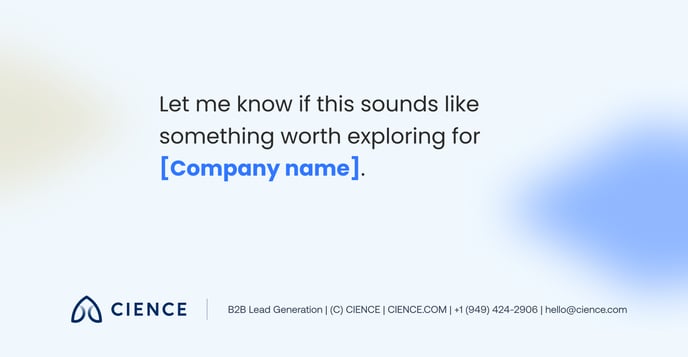
2. Be curious.
Nothing is worse than a dry, impersonal, cold email template with boring text on a vast green CTA button at the end. If you want to grab someone’s attention, you need to be genuinely interested in what exactly their needs are. By being interested in your prospect, you are more likely to have mutual interest reciprocated.
The best way to show your interest is to ask questions. These do not necessarily have to be related to business. For example, asking how the weather is in their hometown might be a great icebreaker before the CTA.
3. Include only one CTA.

Before writing a cold email call to action, you should define what action you want your prospects to complete. Do you want them to subscribe to your news? Purchase a product? Or maybe read the latest blog post? Decide what exactly you want them to do and ask about it in your CTA.
But remember, you can’t have it all. You have to pick up just one call to action. The conversion rate math is simple: Zero CTAs equals zero actions; one CTA equals one action; two or more CTAs equals again zero actions.
However, this doesn’t mean you can’t have multiple CTA links and buttons in one cold email. You can, but only if they all serve the same purpose. Please don’t confuse your prospects by asking them to do different things in one email. With a cold email CTA, less is more.
4. Ask for permission before sending anything.
Considering the fact that 91% of all cyber attacks start with a phishing email, it’s not a surprise that your prospects loathe opening links or downloading attachments from people they don’t know. That is why the primary purpose of the first cold email you send should be not to sell a product but to establish good, trustworthy relationships with the prospect.
Your cold email call to action should reflect this desire. Be considerate about your prospect’s safety; it's just a nice thing to do. It is also recommended to use a proxy server as it will help you to prevent cyber attackers from entering a private network.
A great email call-to-action example when asking for permission can be a simple phrase like:
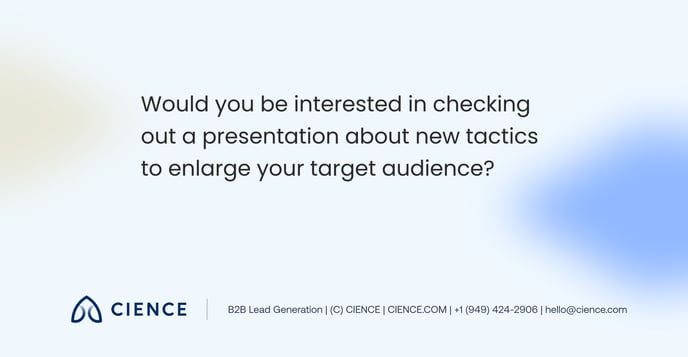
5. Never ask for a thirty-minute call.
Time is the most valuable resource your prospect can offer. And yes, in most cases, the purpose of any cold email is to set up a meeting and sign a deal. But, if it was not about sales, would you ask a total stranger for half an hour of their life to pitch them something they might not even be interested in?
A much better approach is to ask a generic question, which implies setting up a meeting, like:
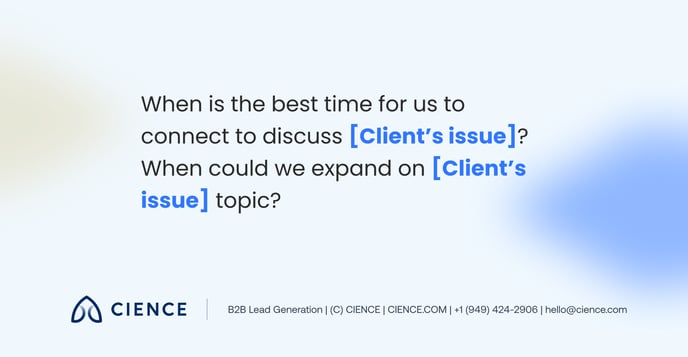
Another way to include an appointment setting CTA in a cold email template is by offering a time:
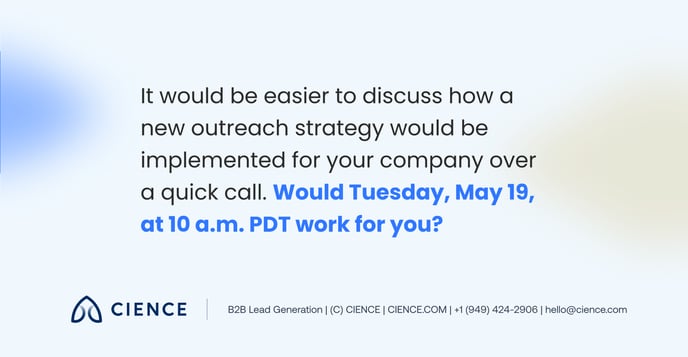
Of course, don’t forget to check your prospect’s calendar and choose a free slot, if possible. If not, offer a link to your calendar instead.
Bonus tip: Make the rest of your email support your CTA.
A successful cold email template with a CTA has a certain structure: a personalized conversation opener, a valuable offer, and a trigger to accept this offer. If you get some element out of this structure, the email won’t work.
But the main point here is to write your emails with intention, so by the time the prospect gets to the CTA, they are already convinced they need to jump in. All they have to do to make it happen is to follow the link, press the button, reply to the email, etc.
More Call-to-Action Email Examples
Check out these five call-to-action examples and find out why they work so well to grab prospects:
- Find out why modern business leaders prefer remote selling to an office environment.
Why it works: Instead of "read this article," you provide context and generate interest. - Make your new day more efficient with our planner.
Why it works: Instead of negative "stop wasting your time," you get positive wording with a reason for a click. - Let's take this to your inbox.
Why it works: Instead of "sign up for our newsletter," it is original and fresh. - Book a free inspection of your website.
Why it works: Instead of the traditional "fill out a form," you offer a free service to showcase your value. - Are you losing website visitors? Check now.
Why it works: Instead of "try our website visitor tracking tool," you address the pain point of your target audience and imply that they might be doing something wrong, which is no one's favorite moment.
Make Your CTAs Work
Don’t expect your CTA to do the entire job and make the sales happen by magic. Your email text should do it instead. And a CTA is only another reminder for a prospect to complete a particular action.
A good call-to-action email requires lots of background work and detailed research on your prospects. To help you get to know your clients better and learn how to create the right CTA, get in touch with our specialists.
A Few (Related) Sales Posts
 Featured image: How to Create a B2B Thought Leadership Plan - Read full post: How to Create a B2B Thought Leadership Plan
Featured image: How to Create a B2B Thought Leadership Plan - Read full post: How to Create a B2B Thought Leadership Plan
How to Create a B2B Thought Leadership Plan
 Read full post: Cold Calling Scripts: How to Win More B2B Sales
Read full post: Cold Calling Scripts: How to Win More B2B Sales


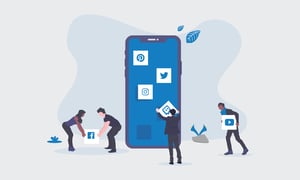 Read full post: 10 Best Ways to Increase B2B Sales
Read full post: 10 Best Ways to Increase B2B Sales